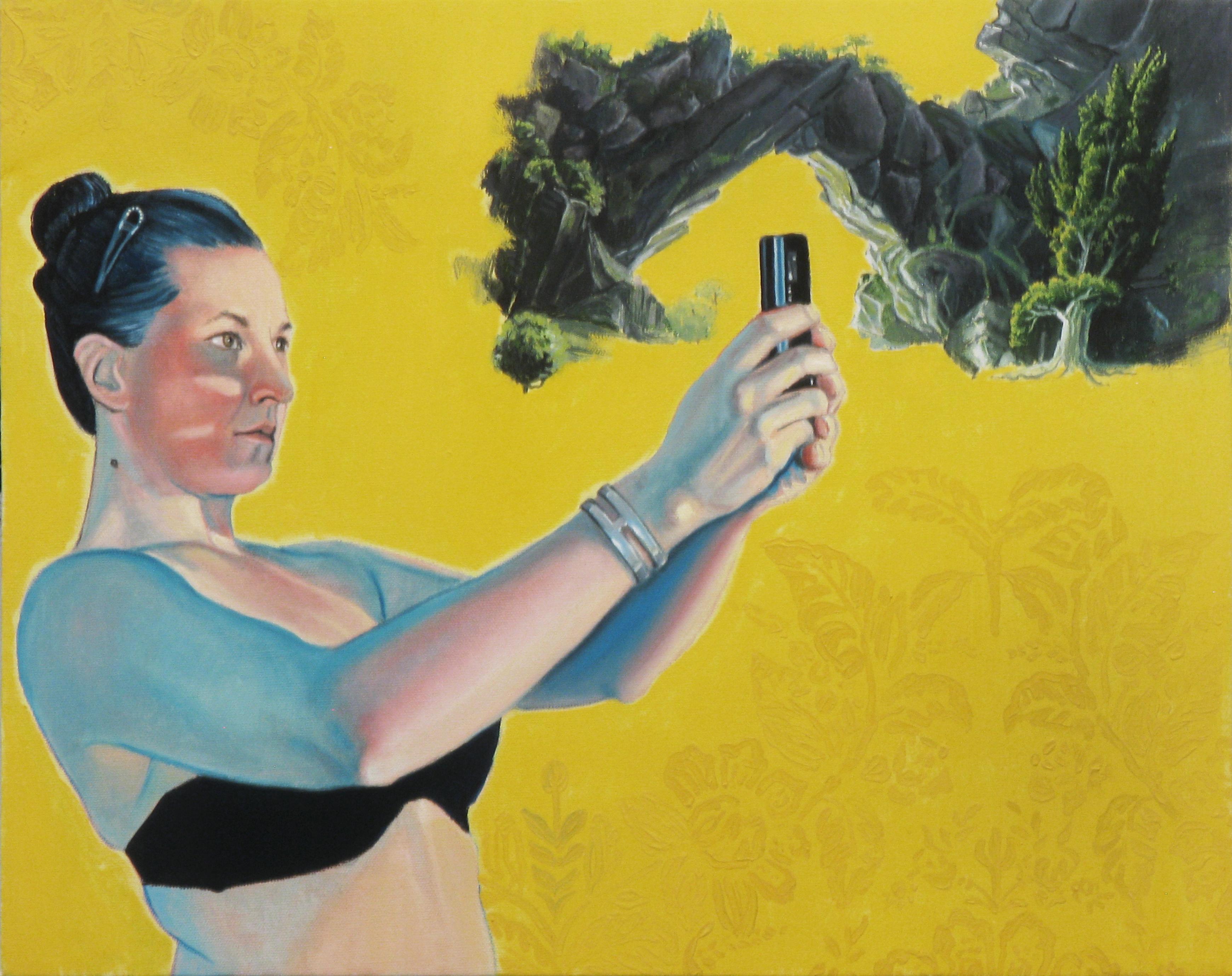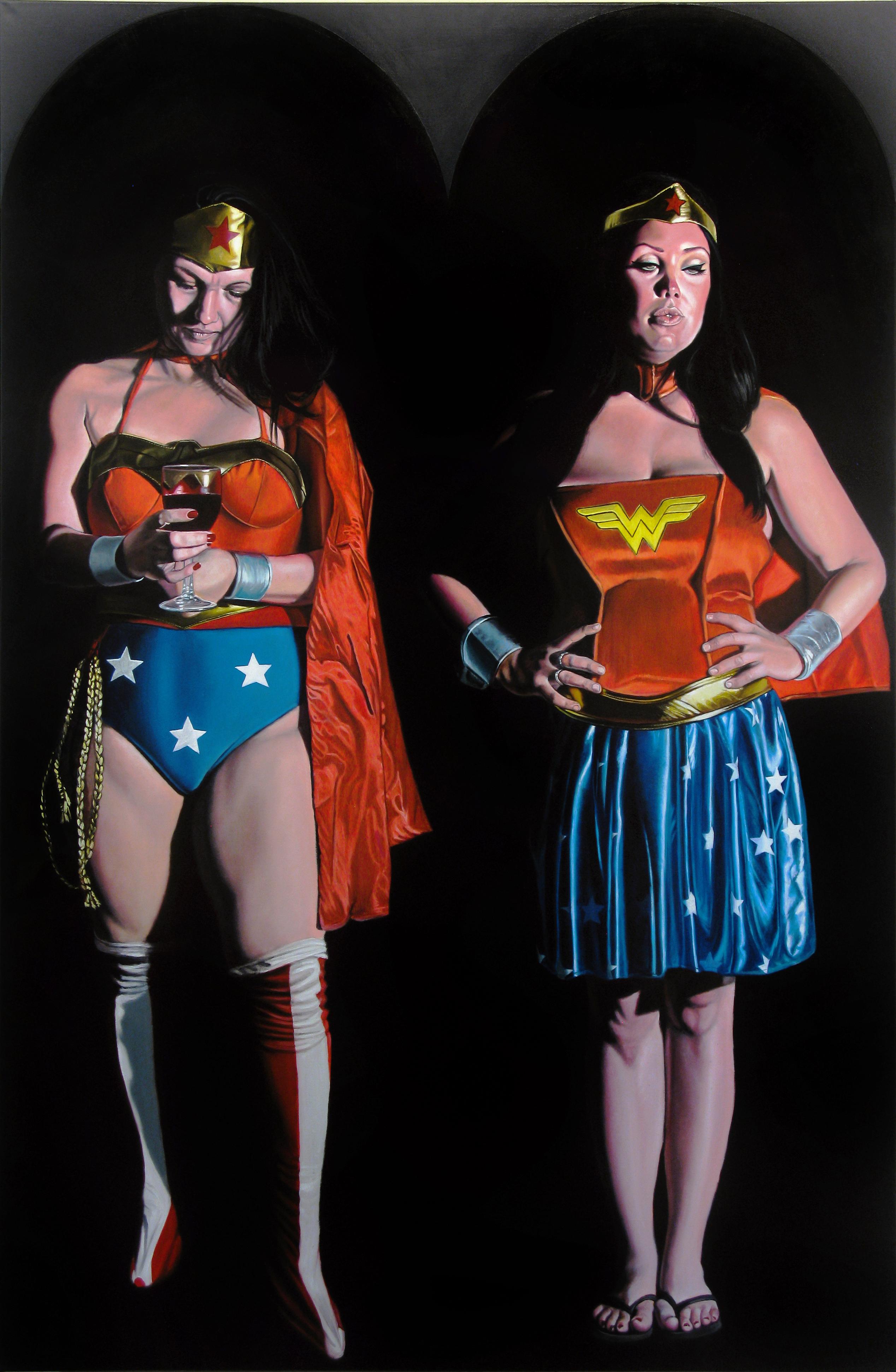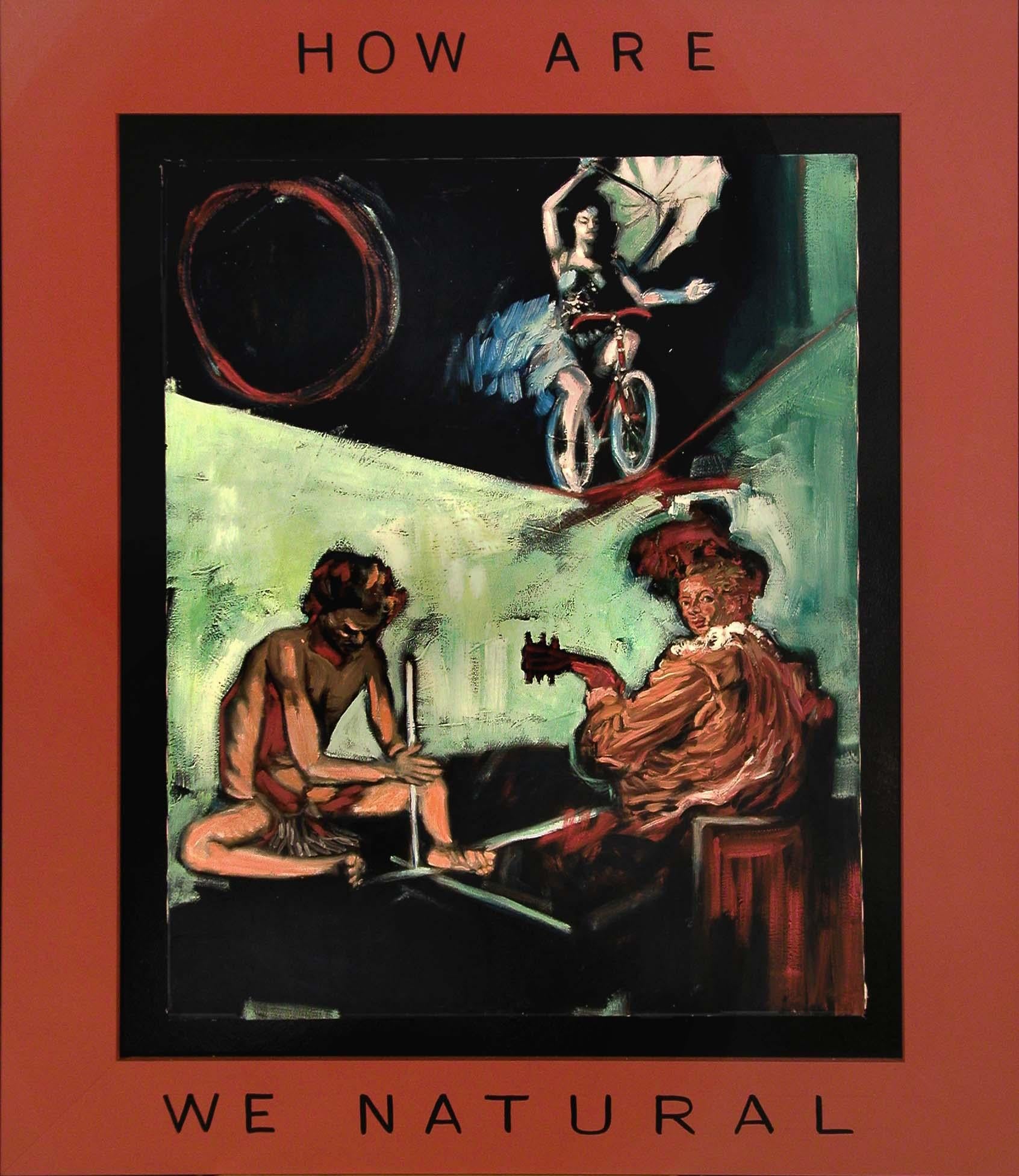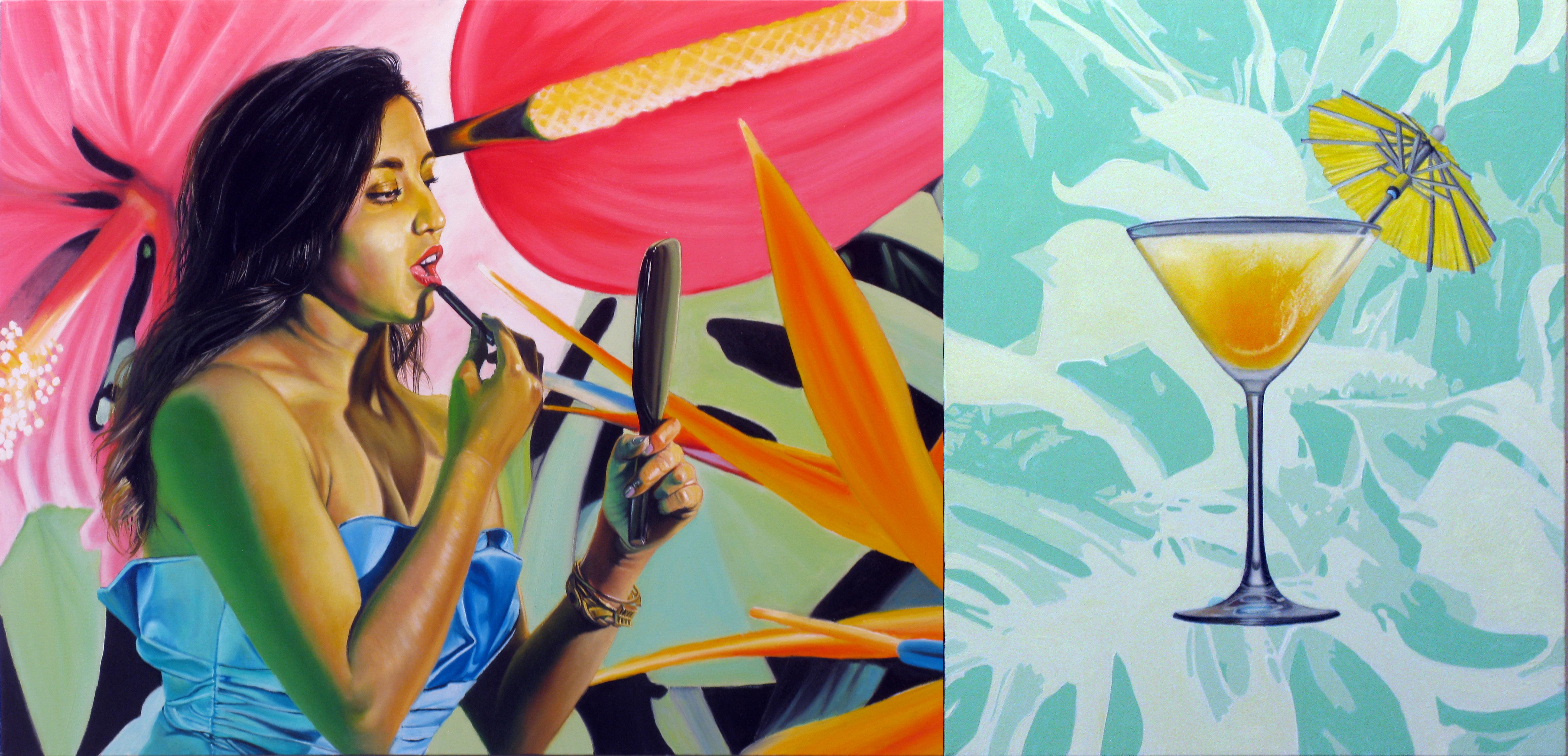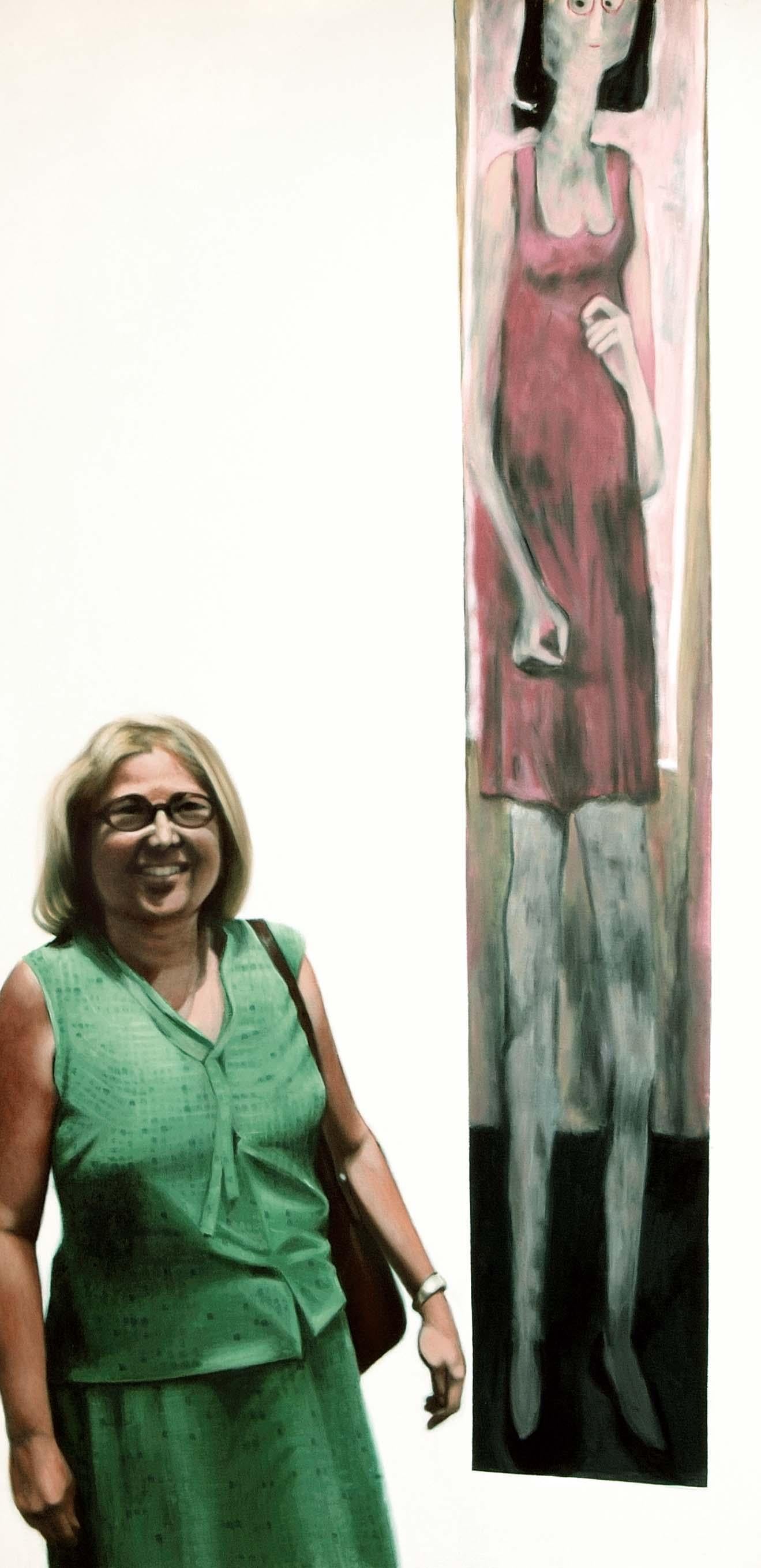Items Similar to Highly Detailed Oil Painting - Old Woman Knitting Attributed to David Monies
Want more images or videos?
Request additional images or videos from the seller
1 of 11
Highly Detailed Oil Painting - Old Woman Knitting Attributed to David Monies 1840s
1840s
About the Item
Essay:
David Monies (1812-1894) was a danish artist, specializing in portrait and genre painting. His father Salomon Monies (1786-1853) was a Jewish businessman of Dutch heritage, David's early life was marked by significant hardship. The family, initially affluent, was thrust into destitution following the Danish state bankruptcy of 1813, compelling David and his siblings to assist in their father's modest cigar factory and sell their products on the streets.
Despite these early struggles, David's artistic journey commenced remarkably early. By age twelve, he was already attending classes at the esteemed Royal Danish Academy of Fine Arts, quickly establishing himself as a proficient portraitist. His work from the early 1830s garnered considerable acclaim and a supportive following within both professional circles and the broader artistic community. This period also took Monies into genre painting, often incorporating his artist peers into these compositions.
This portrait by Monies features an elderly woman, her head adorned with a headdress, engaged in knitting and draped in a fur shawl. This painting stands as a testament to Monies' exceptional skill in capturing the essence of his subjects with intricate detail and lifelike realism, akin to the precision of a photograph, particularly in rendering skin tones and shadows.
Monies' artistic prowess was formally recognized in 1847 when he was accepted as an "Agré" (an associate member) at the Academy, a precursor to his promotion to full membership the following year. His journey, from a challenging childhood to achieving acclaim in the art world, encapsulates a story of resilience, dedication, and unmatched artistic excellence.
canvas dimensions 11.41 x 8.66 inches (29 x 22 cm)
framed 46 x 39 cm
- Attributed to:David Monies (1812 - 1894, Danish)
- Creation Year:1840s
- Dimensions:Height: 18.12 in (46 cm)Width: 15.36 in (39 cm)
- Medium:
- Movement & Style:
- Period:
- Framing:Frame IncludedFraming Options Available
- Condition:Good condition, bright and clear colours. Patina. Gold frame included. Ready to hang.
- Gallery Location:Stockholm, SE
- Reference Number:1stDibs: LU1445213911292
About the Seller
5.0
Platinum Seller
These expertly vetted sellers are 1stDibs' most experienced sellers and are rated highest by our customers.
Established in 2020
1stDibs seller since 2020
117 sales on 1stDibs
Typical response time: <1 hour
Associations
International Confederation of Art and Antique Dealers' Associations
- ShippingRetrieving quote...Ships From: Stockholm, Sweden
- Return PolicyA return for this item may be initiated within 2 days of delivery.
More From This SellerView All
- Moments of Reflection Depicting a Woman Sitting by the Fire, Original Oil PaintBy Sam UhrdinLocated in Stockholm, SEWe are pleased to present a captivating painting by the artist Sam Uhrdin (1886-1964). This beautiful artwork depicts a woman from Dalarna, sitting in front of a warm, glowing fire. The entire painting is bathed in a soft, radiant light, particularly illuminating her face and traditional white/red attire. The woman appears contemplative, lost in thought, perhaps thinking of someone dear to her heart. She is depicted in a kitchen, taking a moment to relax after a day's chores in her home. Sam Uhrdin's artistic journey began in the early 1900s, he traveled to Stockholm in 1903 to further continue his studies in painting. He worked as a painter during the day and attended various evening schools in the evenings. In 1906, he journeyed to America to work as a sign painter, but he mainly ended up working as an upholsterer. Returning to Leksand in 1909 via London and Paris, his artistic talent gained recognition, and with the help of some patrons, he began studying at the Royal Academy of Fine Arts in 1911, occasionally attending Althin's painting school in Stockholm. Financial circumstances cut his study time short, and his skill as a portrait painter earned him numerous portrait commissions, which further occupied his time. In 1921, Uhrdin received a scholarship from the Royal Academy, enabling him to embark on a study trip in 1922 to the Netherlands, Belgium, and France, which he had to cut short due to his wife's illness. He later visited places like Spain and Portugal. Uhrdin's breakthrough came with his portrait of the former Prime Minister Nils Edén, which he executed in 1919. In 1921, he portrayed the participants of the Swedish Academy. Among other representatives of official Sweden captured by Uhrdin were Gustav V, Manne Siegbahn, Ludvig Stavenow, and bishops Gottfrid and Einar Billing. In 1932, he held a solo exhibition at Konstnärshuset in Stockholm, and he participated in various exhibitions, including the Swedish Artists' Association in Stockholm in 1917, Swedish Art at Valand-Chalmers in Gothenburg in 1923, Dalarna Artists displayed at Liljevalchs Konsthall in 1936, and the National Museum's traveling exhibition "Barnet i konsten" (Children in Art...Category
1940s Realist Portrait Paintings
MaterialsCanvas, Oil
- Oil Sketch for the Painting "Gustavus II Adolphus before the Battle of Lützen"Located in Stockholm, SEThis is an oil sketch for the famous painting "Gustavus II Adolphus before the Battle of Lützen" today in the Göteborgs Konstmuseum's collection. There is something special with an ...Category
1890s Portrait Paintings
MaterialsCanvas, Oil
- Cuzco School - A Portrait of Archangel Raphael With Fish, 1800s, Oil on CanvasLocated in Stockholm, SEAnonymous, Cuzco School A Portrait of Archangel Raphael With Fish oil on canvas 1800s canvas dimensions 22.24 x 15.74 inches (56.5 x 40 cm) frame ...Category
19th Century Figurative Paintings
MaterialsCanvas, Oil
- An Apostle Painted in the Circle of Peter Paul Rubens, Oil on CanvasLocated in Stockholm, SEPeter Paul Rubens (circle of) An Apostle circular 15.15 inches (38.5 cm) oil on canvas Provenance: Bukowskis Auctions, lot 725149, as "Peter Paul Rubens, circle of".Category
17th Century Portrait Paintings
MaterialsCanvas, Oil
- The story of the Belle époque in one portrait by John da CostaBy John da CostaLocated in Stockholm, SEThe story of the Belle époque in one portrait When it comes to glamour, no period in the history of art can compete with the Belle époque. A generation of highly talented artists developed new styles of portraiture that not only showed fashionable taste and elegance – but also the tensions and changes to come that lured behind the surface of this glittering age. One of them was John da Costa (1867–1931) also – involuntarily – known as “The John Singer Sargent of children’s portraits”. The time period between the Franco-Prussian war of 1871 and the outbreak of the first world war of 1914 was an unusually peaceful and prosperous one – at least on the surface. The decades leading up to the largest and most destructive war the world had ever seen were characterized by a combination of industrial boom, cosmopolitan life, the birth of modern art and literature and political movements that eventually would change society forever. In other words, it was a melting pot for many phenomenon and societal transformations that we still today are affected by, not least in the form of art. Breaking away from the more conservative academic traditions, new styles of painting of varying radicality emerged and both chocked and delighted audiences. When it comes to portraiture, names like John Singer Sargent and Anders Zorn conquered international audiences with their electrifying paintings of high society, politicians and celebrities of the era. Their erringly light brushwork created an almost dreamlike atmosphere where everything from the sheerness of dress fabrics, subtle lights of ballroom evenings and dense psychological facial expressions vibrated with the zeitgeist. Initially controversial and breaking with traditional expectations, eventually it was this kind of portraits that became the “dernier cri”, a hallmark of good taste and ultimately the very essence of the Belle époque. And it is here, in the vibrant field of portraiture, that John da Costa finds his place and artistic calling. Born in Teignmouth in southern England, a career in the arts was not an obvious choice for John da Costa. Teignmouth, however, beautifully located in the Devon landscape with its proximity to the roaring sea and picturesque fields, was a small fishing town far away from urban life and the art scene. It appears that it was rather early on that his artistic talent became evident, and after studies in Southampton and Paris he eventually established himself as a prominent painter who would soon achieve an international reputation. Interestingly, he was for a period a member of the Newlyn artist colony in Cornwall, not too far from his hometown, where the natural light inspired numerous artists to explore a new realism “En plein air”, not unlike the more famous Barbizon School in France. However, this path, although certainly an important experience, was not right for da Costa who soon searched for other artistic inspiration. Fellow artist Norman Garstin noted with grief his departure from the colony, but new adventures were on their way and they would take on the form of portraiture. It is hard for us today to understand how esteemed and culturally important the genre of portraiture was during this time. Portraits were constantly discussed and commented on, not only in their function of depicting a person but also as an artistic expression of its own, expanding the notion of what art was capable of documenting in terms of the human psyche, the mood of the time and of course the specific temperament and visions of the artist. Furthermore – and not unimportant – it was also an especially lucrative genre for a younger artist, who could more easily get an income through portraits while at the same time challenging themselves artistically. Painting portraits demanded social skills, patience to deal with customers and a real understanding of different identities, ideals, fashions and particular wishes that each sitter might have. And then, the opinions of art critics and audience was also important to consider. In other words, portraiture is far from only capturing the likeness of a person – it is a deeply psychological, artistic and entrepreneurial endeavor. John Singer Sargent is perhaps the prime example of the complexity of Belle époque portraiture; it seems that he with a few meticulous but light brushstrokes could express an entire identity and of person and an era in a portrait. Perhaps this is why his style became so admired, and why so many artists were inspired to paint in a similar manner. Da Costa was far from alone in his fascination for swift, elegant brushwork in Sargent’s manner – but he was unusual in his ability to interpret it in his own distinct way. Judging from where he received commissions, da Costa was a true cosmopolitan. He was as comfortable working in London as he was in Scotland, France and the US, where some of his most prestigious works were produced. For a number of years, he ran his own art school in Kensington in collaboration with his friend Phil Whiting from the Newlyn colony. The list of famous clients was impressive, among them we find the secretary of the treasury Andrew W...Category
Early 1900s Figurative Paintings
MaterialsCanvas, Oil
- Portrait of Alice Ritter by Ferdinand Fagerlin. Oil on CanvasLocated in Stockholm, SEFerdinand Fagerlin (1825-1907) Sweden Portrait of Alice Ritter, The Artists Wife oil on canvas signed with monogram painted 1862 canvas size 27.95...Category
1860s Portrait Paintings
MaterialsCanvas, Oil
You May Also Like
- Oil Painting / Photorealism / Figurative Art / Human Figure /MuseumBy Bruce AdamsLocated in Buffalo, NYBruce Adams was a painter, art educator, and writer. Born in Buffalo, N.Y., in 1952, he received a B.S. in 1976 and an M.A. in 1983 from Buffalo State College. Adams’s work is includ...Category
2010s Realist Figurative Paintings
MaterialsCanvas, Oil
- Oil Painting / Abstract versus Figurative Art / Figurative Art / Human Figure /By Bruce AdamsLocated in Buffalo, NYBruce Adams was a painter, art educator, and writer. Born in Buffalo, N.Y., in 1952, he received a B.S. in 1976 and an M.A. in 1983 from Buffalo State College. Adams’s work is includ...Category
1980s Realist Figurative Paintings
MaterialsCanvas, Oil
- Oil Painting / Photorealism / Figurative Art / Human Figure /MuseumBy Bruce AdamsLocated in Buffalo, NYBruce Adams was a painter, art educator, and writer. Born in Buffalo, N.Y., in 1952, he received a B.S. in 1976 and an M.A. in 1983 from Buffalo State College. Adams’s work is includ...Category
2010s Realist Figurative Paintings
MaterialsCanvas, Oil
- Oil painting / Portrait / Figurative/ Museum/ Interior/ Expressive/ TextBy Bruce AdamsLocated in Buffalo, NYBruce Adams was a painter, art educator, and writer. Born in Buffalo, N.Y., in 1952, he received a B.S. in 1976 and an M.A. in 1983 from Buffalo State College. Adams’s work is includ...Category
Early 2000s Realist Figurative Paintings
MaterialsCanvas, Oil
- Untitled 021 (Cocktail dyptych)By Bruce AdamsLocated in Buffalo, NYBruce Adams was a painter, art educator, and writer. Born in Buffalo, N.Y., in 1952, he received a B.S. in 1976 and an M.A. in 1983 from Buffalo State ...Category
2010s Realist Figurative Paintings
MaterialsOil, Canvas
- Oil Painting / Photorealism / Figurative Art / Human Figure /By Bruce AdamsLocated in Buffalo, NYBruce Adams was a painter, art educator, and writer. Born in Buffalo, N.Y., in 1952, he received a B.S. in 1976 and an M.A. in 1983 from Buffalo State College. Adams’s work is includ...Category
Early 2000s Realist Figurative Paintings
MaterialsCanvas, Oil
